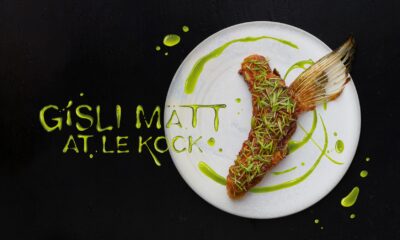Lifid
America's Next Generation of Chinese Cuisine

Cheap, fast and greasy is often the average Americans only experience with Chinese food. But many chefs have been setting out to change that image; the modernization of this ancient and diverse cuisine has become a fine dining trend.
In the 80s, high-concept Chinese cuisine first emerged with multi-unit operations such as China Grill. On the West Coast, the concept found expression in a restaurant called Wild Ginger which opened in Seattle in 1989.
The notion of Chinese food as haute cuisine garnered further acceptance as diners opened up their palates to unfamiliar ingredients. New York star chef Jean-Georges Vongerichten escalated the trend with his restaurant, 66, which opened in 2003. While Vongerichten was already incorporating elements of traditional Chinese food into his fusion cuisine at his other restaurants, such as Jean Georges, JoJo and Vong, there was no mistaking the Chinese focus of the menu at 66.
Now, Vongerichtens protégé, Chef Angelo Sosa, has taken up the mantle, exemplifying how chefs can thoughtfully interpret Chinese flavors for more sophisticated American palates. Sosa first gained attention for his modern-Chinese menu at Yumcha, a tiny restaurant in New York Citys Meatpacking District. More recently, he has been involved in consulting projects for Stephen Starr’s Buddakan New York, a next generation mega-restaurant with 260 seats, and for Alain Ducasse’s Spoon concepts in Paris and Monaco. Later this year, Sosa plans to open a restaurant in New York City featuring a menu with dishes that are focused on the rustic foods of Asian country sides.
Chefs going abroad to seek out traditional cuisine resulted in the increased knowledge of upscale Chinese. Sosa spent time in cultural hubs such as Hong Kong, France, and Spain, but it was only in Hong Kong that he found inspiration. He brought back the ingredients and hands-on experience and uses his own technique and French training to deliver traditional Chinese flavors. I wouldnt call it a stereotypical fusion cuisine because I try to stay true to the purity of the cuisine, he says.
Regional influences stand out in Sosas dishes. His Ginger-Lacquered Veal Cheeks find their origins in Beijing, where the cuisine is typified by sweetened vinegary ribs and candied glazes. Drunken Peekytoe Crab Salad reflects on the frequent use of alcohol in Shanghai cooking. Soaking fish, eel, crab or chicken in alcohol, such as the intense Shaoxing wine, lends fermented, aged flavor profiles characteristic of the regions cuisine.
Chinese cuisine is very diverse one influence is Italy but it is also influenced by Thailand, Japan, India. People dont realize that, says Sosa, who aims to revolutionize Chinese foods image using what he learned overseas. Sosa understands its potential in terms of new concepts and creativity. The cuisine itself is flavorful and ancient but still very underdeveloped in the US, he says.

-

 Markaðurinn11 klukkustundir síðan
Markaðurinn11 klukkustundir síðanVeitingastaðurinn Stapinn á Arnarstapa er til sölu
-

 Nýtt bakarí, veitingahús, fisk- og kjötbúð og hótel1 dagur síðan
Nýtt bakarí, veitingahús, fisk- og kjötbúð og hótel1 dagur síðanPizzabakarinn opnar á Siglufirði – Theodór Dreki: „Við hættum ekki fyrr en pizzan var fullkomin“
-

 Keppni4 dagar síðan
Keppni4 dagar síðanÍslenska landsliðið í kjötiðnaði sýndi frábæran árangur á Heimsmeistaramótinu í París – Myndir og vídeó
-

 Viðtöl, örfréttir & frumraun3 dagar síðan
Viðtöl, örfréttir & frumraun3 dagar síðanSnædís, Hafliði og Marlís kynntu íslenska matargerð á ríkisheimsókn forsetahjóna
-

 Viðtöl, örfréttir & frumraun4 dagar síðan
Viðtöl, örfréttir & frumraun4 dagar síðanPop-up kvöld: Gísli Matt mætir á Le KocK – aðeins þetta eina kvöld
-

 Markaðurinn3 dagar síðan
Markaðurinn3 dagar síðanKælivagn til leigu
-

 Íslandsmót barþjóna3 dagar síðan
Íslandsmót barþjóna3 dagar síðanRóbert Aron Garðarsson Proppé er Íslandsmeistari Barþjóna 2025 – Myndir og vídeó
-

 Markaðurinn5 dagar síðan
Markaðurinn5 dagar síðanKynning í Garra næsta miðvikudag












